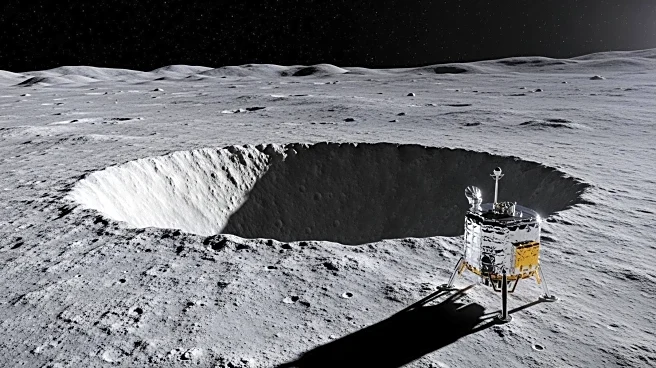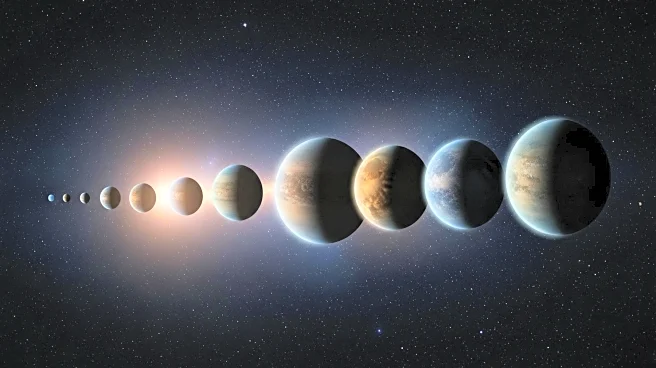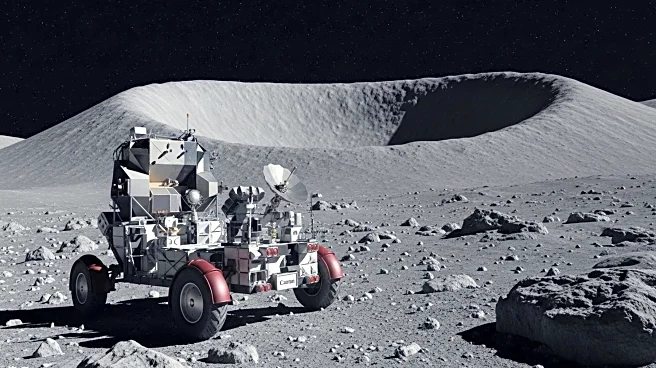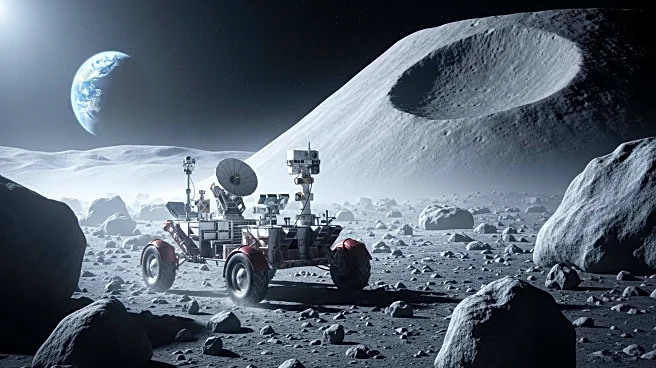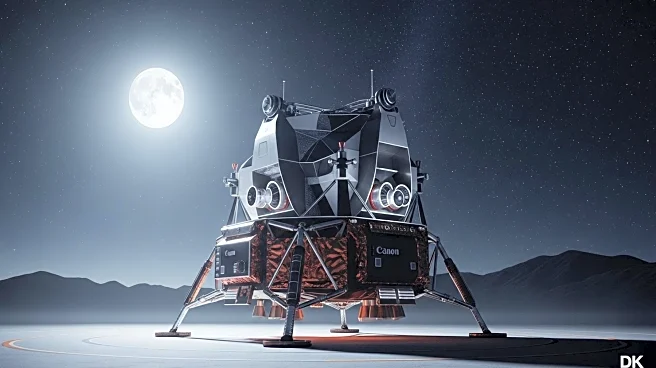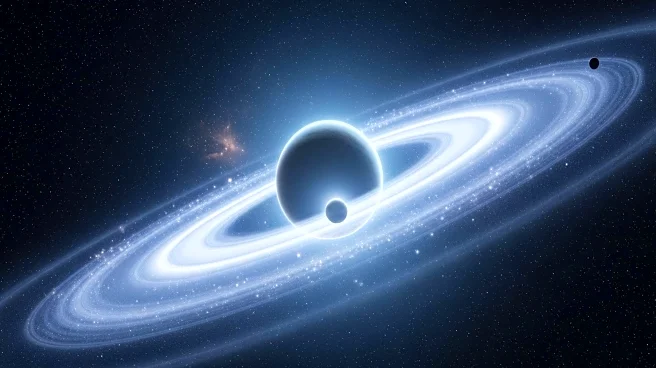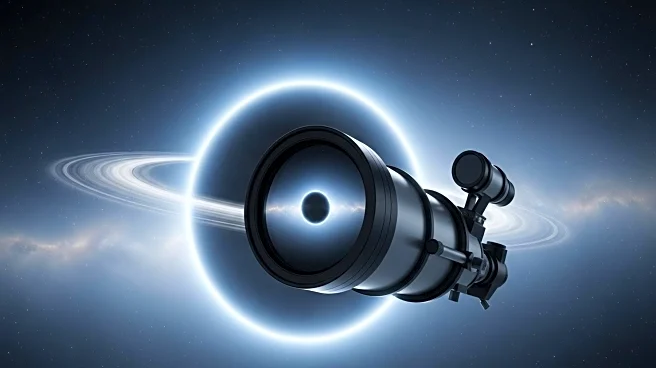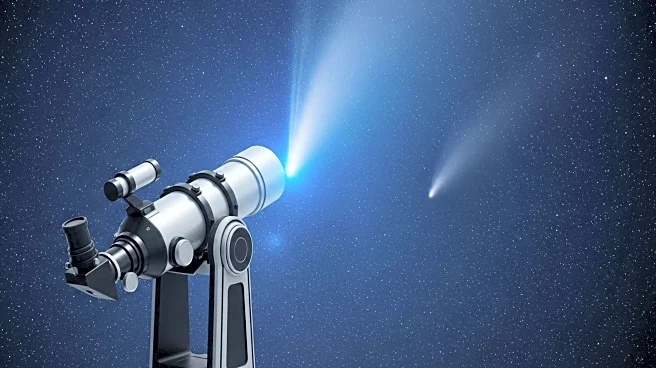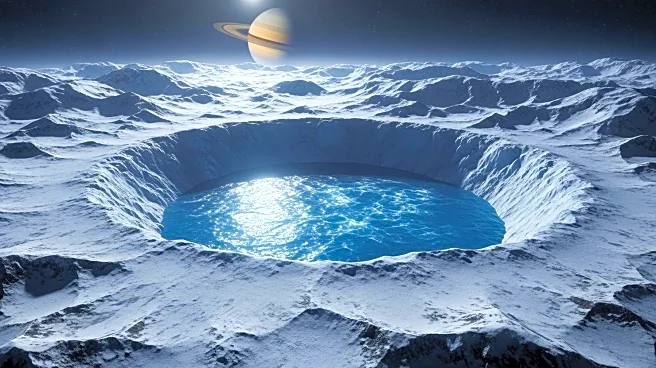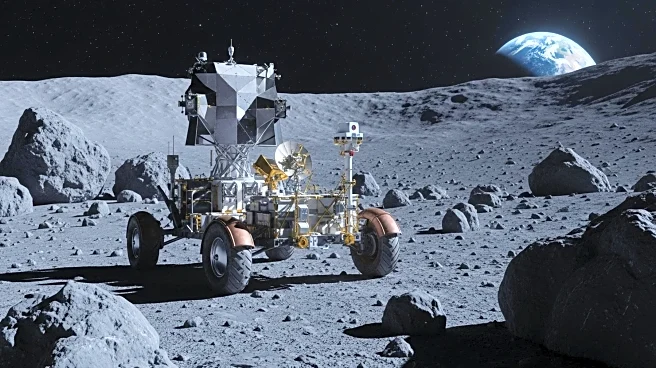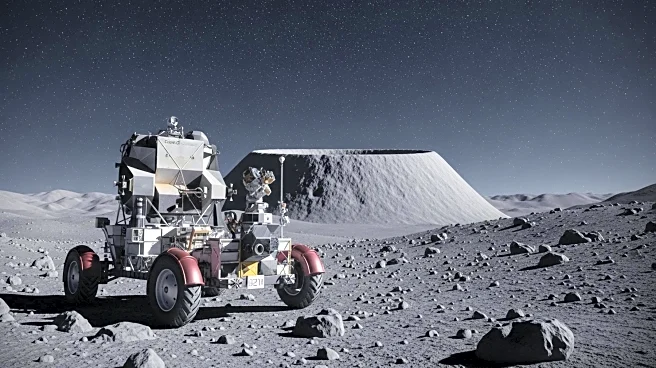What's Happening?
A study led by Jeffrey Andrews-Hanna from the University of Arizona suggests that the moon's south pole may hold significant clues about its formation. The research indicates that a massive asteroid impact 4.3 billion years ago created the South Pole-Aitken basin, revealing details about the moon's violent early history. The study also explores the distribution of KREEP elements, which are concentrated on the moon's near side, and how they influenced the moon's geological evolution. The findings could provide valuable insights when NASA's Artemis missions land near the south pole.
Why It's Important?
Understanding the moon's formation and geological history is crucial for future lunar exploration and potential resource utilization. The Artemis missions aim to land astronauts near the south pole, where they can study the largest and oldest impact basin on the moon. This research could help scientists unravel mysteries about the moon's asymmetrical crust and the concentration of KREEP elements, which have implications for lunar volcanism and the potential for sustaining a moon base.
What's Next?
As NASA's Artemis missions progress, astronauts will collect samples from the moon's south pole, providing researchers with more data to analyze. These samples could offer new insights into the moon's early evolution and the distribution of KREEP elements. The University of Arizona and other institutions are preparing to study these samples, which may reveal more about the moon's geological history than previously thought.
Beyond the Headlines
The study highlights the importance of interdisciplinary research in space exploration, combining planetary science, geology, and chemistry to understand celestial bodies. The findings also underscore the potential for discovering valuable resources on the moon, which could support future missions and the establishment of a lunar base.
